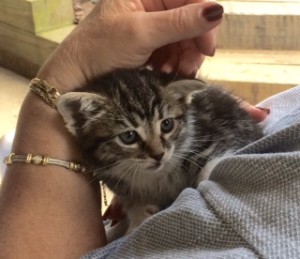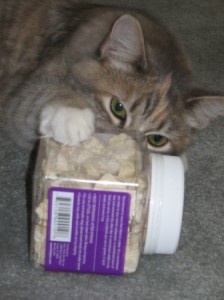 Did you know that cats can suffer from diabetes, asthma, arthritis, acne, the cat flu, and even false pregnancies? They can get gallstones, glaucoma, gum disease, cushings disease, and even high blood pressure and cirrhosis of the liver. And a cat an have epileptic seizures.
Did you know that cats can suffer from diabetes, asthma, arthritis, acne, the cat flu, and even false pregnancies? They can get gallstones, glaucoma, gum disease, cushings disease, and even high blood pressure and cirrhosis of the liver. And a cat an have epileptic seizures.
These are all very good reason why you need to keep a close eye on your cat and report any physical changes or suspicious behavior to your veterinarian. This would include lethargy (in a typically energetic cat), lumps, rashes, tender spots, limping, bad breath, and any other changes you notice in your cat. If she’s sneezing a lot, she could have a foxtail in her nose, for example, especially as spring brings spring flowers and weeds.
When I had a horse, I learned how important it is to spend time with the animal. I thought this was mainly so you could bond with your horse—I mean, you are a team when you’re working together in competition or on the trail. When you handle a horse (or a cat) more often, they become more trusting; you learn about the animal’s idiosyncrasies and she learns about yours. And by my handling her more often, she becomes more gentle.
But another reason why you should interact regularly with your pet (horse, dog, cat,  hamster, bird) is so that you can keep an eye on her health. The more you handle your animal, the more in tune you are about her personality as well as her health.
hamster, bird) is so that you can keep an eye on her health. The more you handle your animal, the more in tune you are about her personality as well as her health.
Groom your cat, pet her, examine her body. Look into her eyes, ears, and even her mouth. Feel for mats and internal masses. Notice if she winces when you touch certain areas, licks a spot over and over, is not eating, or is drinking more water than usual, for example. And when you detect something new, or even if it is something you’ve noticed for a long time and it isn’t quite normal, it’s time to take her to the vet.
Cats are living longer than ever before in history and one of the reasons why is better veterinary care. But our cats rely on us to get that care when it’s needed—in time to help the cat through any health issues that might arise.
Now, go pet your cat!





